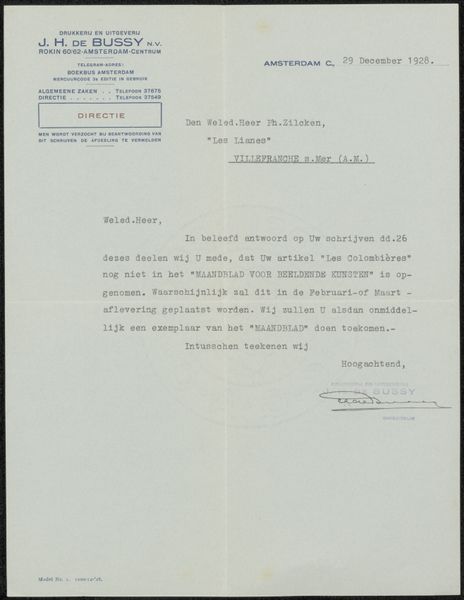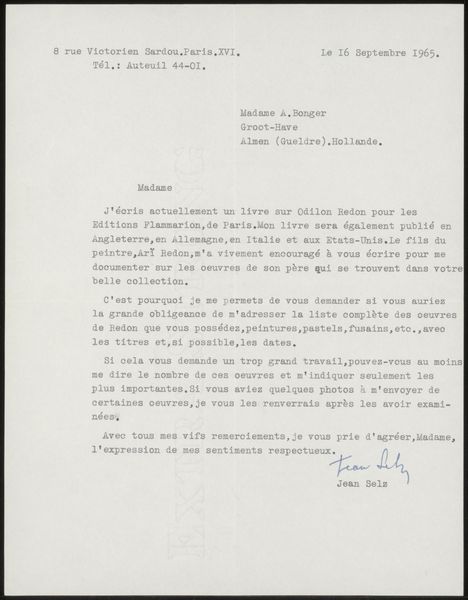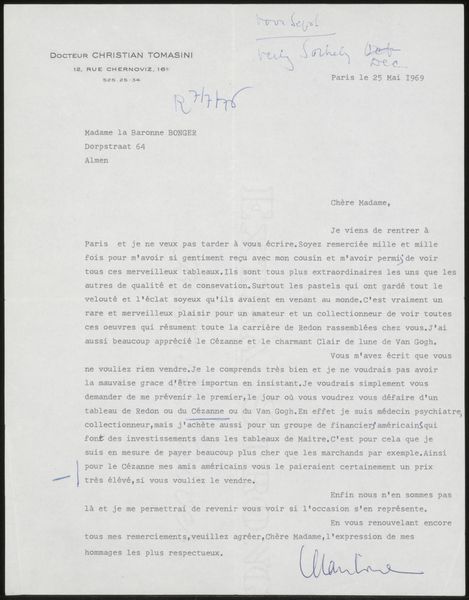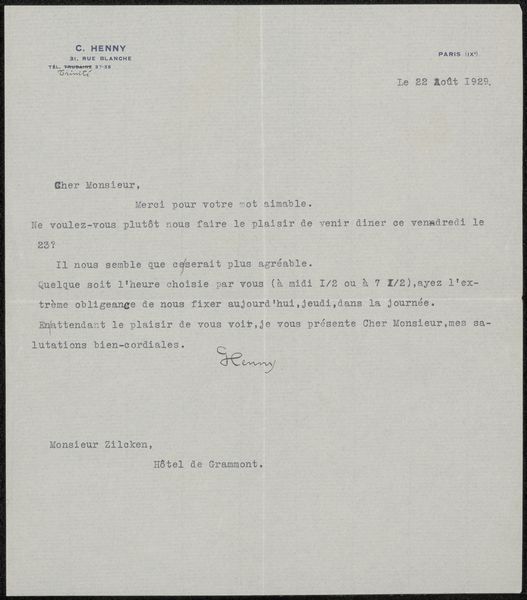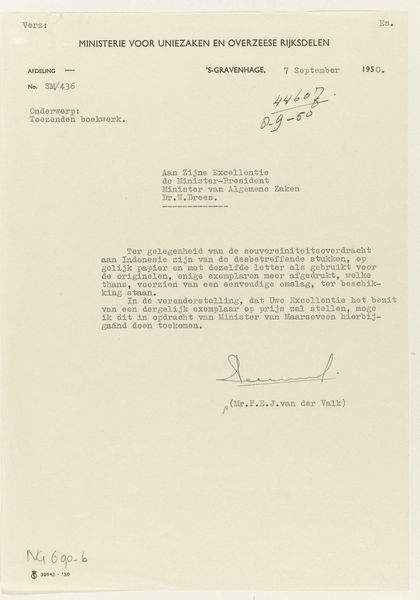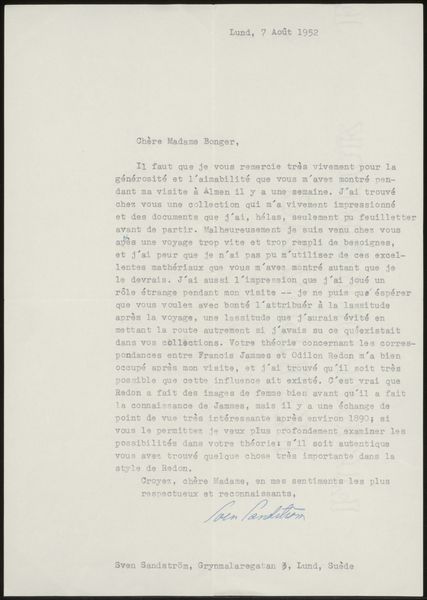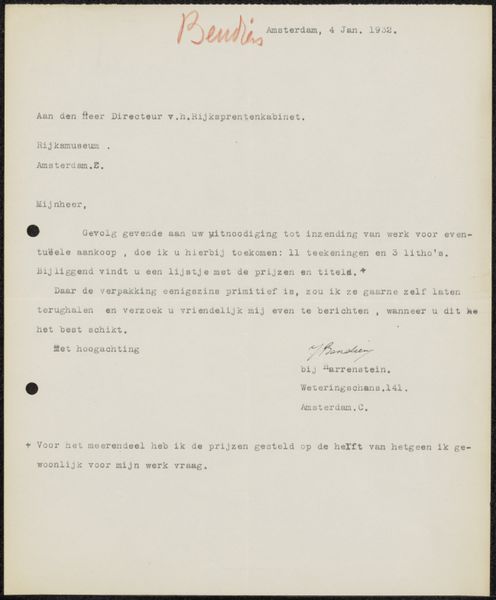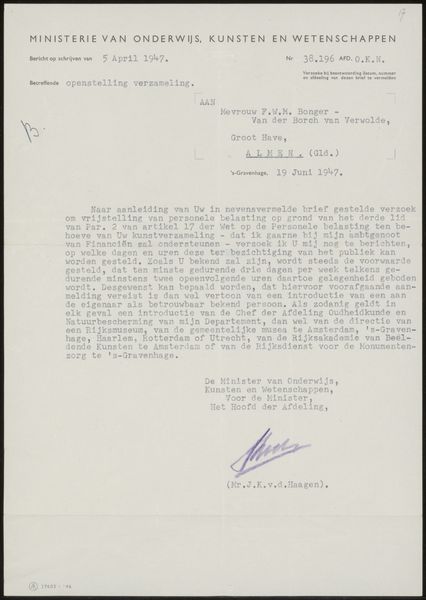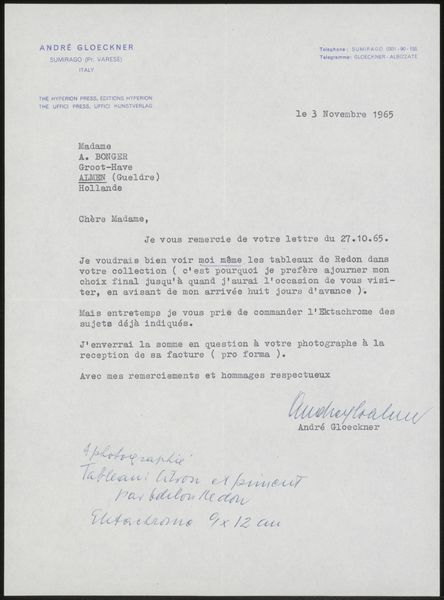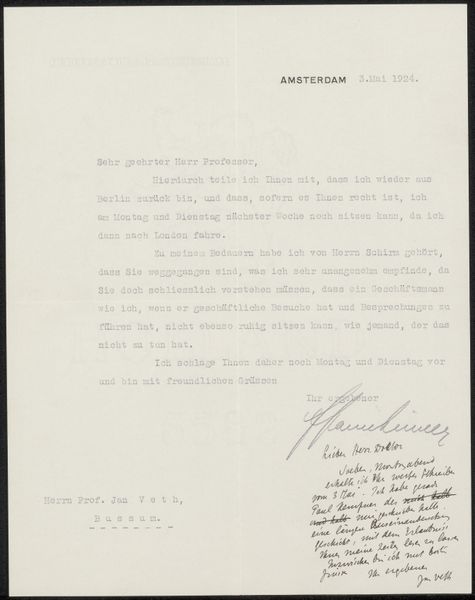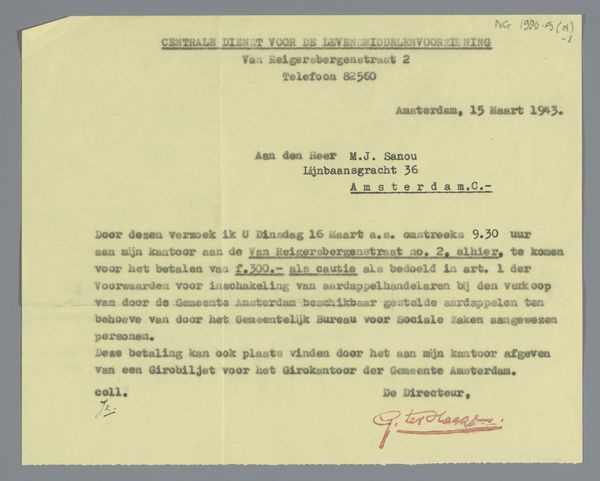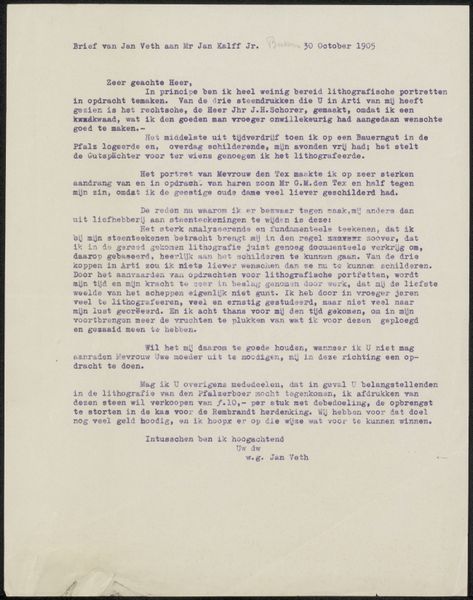
paper, typography
#
paper
#
typography
Copyright: Rijks Museum: Open Domain
Curator: We’re looking at “Brief aan Daniel Apollonius Delprat,” thought to be from 1979, created by J.A. de Wit. It's a letter typed on paper, offering a peek into personal correspondence. Editor: The eye immediately moves around the image based on hierarchy—large at the top, less so in the middle. Notice how the blue signature, down in the bottom of the frame, lends a touch of humanity. Curator: Precisely! Considering the date, the typewriter becomes significant. It speaks to the era, predating widespread computer use, reflecting a slower, perhaps more deliberate pace of communication, compared to our instant digital age. Editor: The composition uses symmetry, creating a focal point around the name and address of the recipient in the centre. The layout gives the sense of clarity. Also note that faint blind embossing gives some life to an otherwise neutral support, breaking up its negative space. Curator: This blind embossing connects it to ideas of the sender, as the stationery itself may come from a place of belonging—or maybe aspirations. Consider the social dynamics involved. What position did J.A. de Wit occupy to be corresponding with Mr. Delprat? Editor: We could investigate whether this correspondence uses certain standard rhetorical constructions common to letters from this era—in other words, seeing if there's a grammar beyond its simple semantics. Curator: It opens up discussions about societal structures of the time. Furthermore, historical associations shape my view, considering it’s likely written to a figure in Amsterdam's museum world during a time when that sector, and the city, were navigating changing cultural landscapes. Editor: For me, analyzing the shapes formed by the typed words is key—not only their meaning but their material effect—and their placement on the page opens many pathways to decode their relationship and the object's intended and perceived uses. Curator: Exactly—a humble yet intimate form of exchange offering critical insight into personal and social interaction within specific historical settings. Editor: Ultimately, it makes you think about where the human presence lingers, and the intentional or unintentional meaning it carries as an object.
Comments
No comments
Be the first to comment and join the conversation on the ultimate creative platform.
